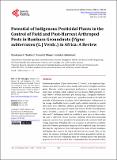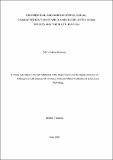| dc.description.abstract | Projected increases in human population suggest that 70% more food will be needed in the near future, this makes it imperative to search for alternative food and feed sources for human and animal nutrition to feed the exponentially growing human population. According to the FAO 2019 report, the immense challenge of achieving the Zero Hunger target by 2030 is persistent. Exploring the unexplored, refining unrefined traits, cultivating the uncultivated, and popularizing the unpopular remain the most adequate steps proposed by researchers to achieve the domestication of the undomesticated for food and nutrition security. In that line of thought, this study explored the proximate composition of 87 accessions of four wild unexplored Vigna species (V. racemosa, V. ambacensis, V. reticulata, V. vexillata) in order to reveal information leading to their future domestication and utilization. Standard procedures and methods approved by the Association of Official Analytical Chemists were used in carrying out the proximate composition (%protein, %lipid, %fibre, %ash and % moisture and % carbohydrate) of the wild Vigna legumes. The study revealed that the wild Vigna species possess a large variation range of nutrient characteristics which could be exploited in the improvement of domesticated species or guide their domestication. It was also found that some individual wild accessions have higher nutrient, content as compared with domesticated ones which could be advantageous for bio-fortification or domestication. Indications relating to the candidate accessions favourable for dom | en_US |




